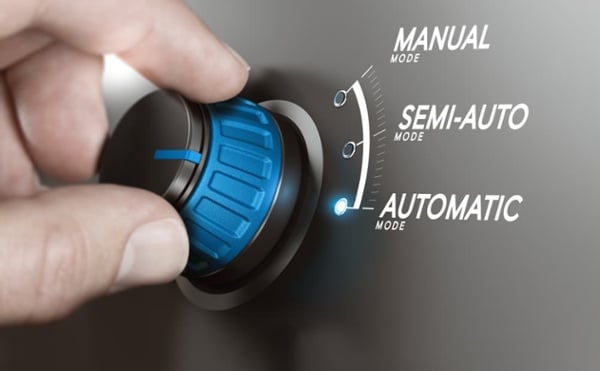The SECURE 2.0 Act of 2022 (SECURE 2.0) made sweeping changes to 401(k) plans that expand coverage, increase retirement savings, and simplify distributions. Many provisions are already in effect—but others take hold in 2025 and 2026, making now the time for small business owners to prepare.
How you respond to these changes can determine whether your plan capitalizes on new opportunities—like expanded Roth options and eligibility—or runs into challenges such as blocked catch-up contributions, missed tax credits, or added administrative burden.
The summary below outlines the major SECURE 2.0 changes, their effective dates, whether they are optional or required, and the steps you can take now to prepare.
Summary of Key SECURE 2.0 Changes for 401(k) Plans
Some of the changes made by SECURE 2.0 are required, while others optional. The table below summarizes the most significant for small business owners.
|
Provision |
Optional or Required |
What Changed |
|
Roth Catch-Up Contributions |
Required |
High-earning employees (those above the IRS wage threshold for the prior year) must make catch-up contributions as Roth. |
|
Roth Employer Contributions |
Optional |
Employers can let participants choose Roth treatment for matching and nonelective contributions. |
|
Long-Term, Part-Time (LTPT) Employees |
Required |
Employees working at least 500 hours in two consecutive years must be allowed to make deferrals. |
|
Hardship Distributions (Self-Certification) |
Optional |
Employers may rely on participant self-certification instead of collecting hardship documentation. |
|
Emergency Distributions (New Types) |
Optional |
SECURE 2.0 added penalty-free withdrawal options for personal emergencies, domestic abuse, and federally declared disasters. |
|
Small Account Cash-Outs ($7,000 limit) |
Optional |
Cash-out threshold for terminated employees increased from $5,000 to $7,000. |
|
Automatic Enrollment for New Plans |
Required |
New 401(k) and 403(b) plans must include automatic enrollment and escalation features unless exempt (< 3 years old, ≤ 10 employees, etc.). |
Roth Catch-Up Contributions
Beginning in 2026, SECURE 2.0 requires “high earners” to make catch-up contributions on a Roth basis. A high earner cannot make catch-up contributions if their plan does not allow Roth contributions.
-
- High Earner: For 2026, a high earner is defined as a plan participant who received more than $150,000 in FICA wages “from the employer sponsoring the plan”, as reported in Box 3 of Form W-2, in 2025 (i.e., the preceding calendar year).
-
-
- Aggregation option: If easier to administer, employers have the option to aggregate the FICA wages paid by members of a controlled group, employers using a common paymaster, and predecessor/successor employers in asset sales.
- No wages, no Roth mandate: If a participant had no FICA wages from the sponsor (e.g., partners with only self-employment income), they are not subject to the Roth-only rule for that year.
- Plans without Roth: Until further IRS guidance, plans may restrict catch-ups only for high earners and continue them for others.
- Corrections: If pre-tax catch-ups are made in error, employers can correct them using either the Form W-2 or in-plan Roth rollover method.
- Deemed Roth catch-up election: Plans can adopt this feature to automatically treat excess deferrals as Roth catch-ups once the §402(g) limit is reached.
-
Preparation Tips
-
- Review your plan document to confirm Roth contributions are allowed. Amend if necessary.
- Coordinate with your 401(k) and payroll providers to track FICA wages and apply the Roth rule correctly.
- Adopt operational enhancements such as deemed Roth catch-up elections and in-plan Roth rollovers.
- Educate employees about the new Roth-only rule for high earners starting in 2026.
Learn more: 401(k) Catch-Up Contributions: Final SECURE 2.0 Rules for Employers
Roth Employer Contributions
SECURE 2.0 allows employees to elect Roth treatment for employer matching and nonelective contributions when permitted by their plan.
When this option is available, the following rules apply:
-
- The election must be made before contributions are made.
- Employees must have a recurring opportunity—at least annually—to make or change their election.
- Contributions are immediately taxable to the employee and must be reported as income.
- The Roth employer contributions must be held in a separate designated Roth account.
This provision is effective now, but administrative guidance is still evolving. Payroll and recordkeeping systems need updates to properly track, report, and withhold taxes. Most providers expect to roll out this functionality in 2025 or 2026.
Preparation Tips
-
- Gauge employee interest before adding this feature—it increases administrative complexity.
- Confirm readiness with your recordkeeper and payroll provider before implementation.
Learn more: Roth Matching and Nonelective Contributions – What Employers Need to Know
Long-Term, Part-Time Employees
SECURE 2.0 shortened the service requirement for long-term, part-time (LTPT) employees from three consecutive years to two, expanding who must be allowed to join a 401(k) plan.
Beginning in 2025, employees who work at least 500 hours in two consecutive 12-month periods must be eligible to make elective deferrals—even if they haven’t met the plan’s normal eligibility requirements. Employers are not required to make matching or nonelective contributions for LTPT employees until they satisfy their normal eligibility requirements.
The LTPT rules are mandatory, but employers can avoid them altogether by setting their normal eligibility requirement at no more than 500 hours of service in a 12-month period. A plan with that threshold will never produce an LTPT employee.
Preparation Tips
-
- Review your eligibility requirements to identify whether they could produce LTPT employees.
- Consider simplifying eligibility for all employees if they could produce LTPT employees to reduce complexity. Otherwise:
- Track part-time hours accurately beginning in 2023 and 2024.
- Identify employees who will become LTPT-eligible in 2025 and beyond.
Learn more: 401(k) Long-Term, Part Time Rules – What Employers Need to Know
Hardship Distributions
SECURE 2.0 simplified hardship distribution rules and expanded emergency withdrawal options, making it easier for employees to access funds when needed while easing administrative burdens for employers.
Self-Certification: Employers can now rely on the participant’s written certification that their request meets both (1) a qualified reason (e.g., medical, housing, education) and (2) the amount necessary to satisfy the hardship. This eliminates the need to collect or retain supporting documentation.
New Emergency Distribution Options
While not technically “hardship distributions,” SECURE 2.0 added new penalty-free distribution types for emergencies that may reduce the need for hardship withdrawals:
-
- Emergency personal expense distributions: 1 per year, up to $1,000, no 10% early withdrawal penalty, repayable within 3 years.
- Disaster recovery distributions: up to $22,000 for federally declared disasters, retroactive to January 26, 2021.
- Domestic abuse victim distributions: up to $10,000 (or 50% of vested balance), no 10% penalty, effective 2024.
Together, these provisions simplify administration and provide meaningful relief to participants facing urgent financial hardship.
Preparation Tips
-
- Review and simplify your hardship procedures and forms.
- Decide whether to permit the new emergency distribution types under SECURE 2.0.
- Communicate new options clearly to employees.
Learn more: 401(k) Hardship Distributions: FAQs (Updated for SECURE 2.0)
Small Account Cash-Outs
SECURE 2.0 increased the small account cash-out limit from $5,000 to $7,000 effective in 2024. This change allows employers to automatically “force out” larger balances of former employees who leave small accounts behind—without their consent.
A cash-out provision helps reduce the number of inactive accounts that can drive up plan administration costs and complicate nondiscrimination testing. Plans may transfer these balances to an IRA on behalf of the terminated participant.
Preparation Tips
- Confirm your plan document includes a cash-out provision.
- Coordinate with your 401(k) provider to update the cash-out threshold to $7,000 to remove as many small, terminated accounts as possible.
Learn more: 401(k) Distribution Rules: Frequently Asked Questions for Employers and Employees
Automatic Enrollment for New Plans
SECURE 2.0 requires many new 401(k) and 403(b) plans to include an automatic enrollment feature beginning in 2025. This change is designed to help more employees save for retirement automatically.
The mandate applies if the sponsoring business has been in existence for at least three years and employs more than 10 employees.
Exempt Plans:
-
- Governmental plans
- Church plans
- SIMPLE 401(k) and SIMPLE IRA plans
- Existing 401(k) and 403(b) plans established before December 29, 2022 (the effective date of SECURE 2.0)
If your plan is subject to the mandate, it must meet Mandated Automatic Contribution Arrangement (MACA) requirements:
-
- Default deferral rate: 3%–10% of pay for eligible employees who don’t opt out
- Rate escalation: Must increase by at least 1% per year until reaching at least 10%, but not more than 15%
- Participant notice: Employees must receive advance written notice of their automatic enrollment and opt-out rights
When an employee becomes eligible, they’re automatically enrolled at the default deferral rate and remain enrolled until they choose to change or stop contributions.
Preparation Tips
-
- Confirm whether your plan qualifies for an exemption.
- If not, verify that your plan’s design meets MACA requirements.
- Coordinate with payroll and recordkeeping providers to implement defaults, escalation, and notices by January 1, 2025.
Learn more: SECURE 2.0’s Automatic Enrollment Mandate for 401(k)s – What Employers Need to Know
Amending Your 401(k) Plan for SECURE 2.0
While employers must begin operating their plans according to SECURE 2.0 provisions as they take effect, formal plan amendments are not due until the applicable deadline.
Amendment Deadlines
-
- Most 401(k) and 403(b) plans: The last day of the first plan year beginning on or after January 1, 2026 (December 31, 2026 for calendar-year plans).
- Governmental and collectively bargained plans: The last day of the first plan year beginning on or after January 1, 2029.
In practice, this means:
-
- Operational compliance comes first. Employers must follow required provisions as they take effect.
- Formal amendment comes later. Plan documents don’t need to be updated until the 2026 (or 2029) deadline.
Special Deadline for Discretionary Amendments
A separate deadline applies to voluntary plan changes (such as adding Roth or hardship features). Under IRS rules, discretionary amendments must be adopted by the last day of the plan year in which the change is effective.
-
- Example: To offer Roth contributions starting January 1, 2026, a calendar-year plan must adopt the amendment by December 31, 2026.
Preparation Tips
-
- Keep a record of all SECURE 2.0 provisions your plan has implemented and when.
- Work with your provider to ensure amendments are drafted and executed on time.
Learn more: 401(k) Amendment Rules – A Guide for Employers
Preparation Is Key for SECURE 2.0 Changes
SECURE 2.0 offers real advantages for employers and employees, but also new compliance challenges. By staying proactive, your 401(k) plan will remain compliant, cost-efficient, and easy to administer as the final SECURE 2.0 rules take effect.
For help evaluating whether your 401(k) plan is ready for SECURE 2.0, contact Employee Fiduciary today—we can help you prepare your plan document, payroll, and operations before the applicable deadline.





